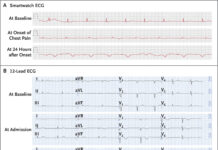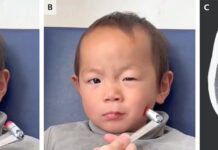
Supernumerary teeth in 26-year-old with no other congenital anomalies
Supernumerary teeth are an odontostomatologic anomaly with the presence of an excessive number of teeth. The condition is generally seen with other congenital disorders, for example, Gardener syndrome, cleft lip and palate and cleidocranial dysostosis. However, cases of supernumerary teeth are usually rare in non-syndromic patients. In a similar case, a 26-year-old man presented to the dental clinic with four supernumerary teeth around his left maxillary second molar.
He was referred for removal of the supernumerary teeth and the left maxillary third molar. His medical history was insignificant other than congenital deformities and hay fever. In addition, at the age of 11, he had two excessive maxillary central teeth removed. His family history was also clear of any colorectal tumours or congenital deformity, except that his younger brother had congenitally missing teeth.
Intraoral examination confirmed the presence of four excessive teeth
The patient’s intraoral examination showed four excessive teeth with one around the palatal and three on the buccal side of the molar. His dentist advised a panoramic radiograph which showed no congenital loss of permanent teeth or residual deciduous teeth. A cone-beam CT was also done, the findings of which were significant for single-rooted and thinly curved teeth around the left maxillary second molar. The teeth were extracted under local anaesthesia. The removed teeth showed microdontia, a condition in which teeth appear smaller than normal and single roots. Similarly, all crown forms were different with conical and incisor-like crowns for 2 and 4 cusps. The lengths of the teeth were measured to be 9–13 and 3–5 mm.
In 50% of the cases, the extra teeth are impacted with only 1% of cases otherwise. Moreover, the occurrence is limited to only one or two teeth. Multiple supernumerary teeth are found in conditions, such as, Gardner syndrome and cleidocranial dysplasia. It is very rare in patients without the syndromes. Statistics show that only 25% of the excessive teeth erupt, whereas 75% of them remain impacted. In this case four of the teeth erupted around the maxillary molar.
References
Four erupted supernumerary teeth around the maxillary second molar https://casereports.bmj.com/content/14/5/e241213



